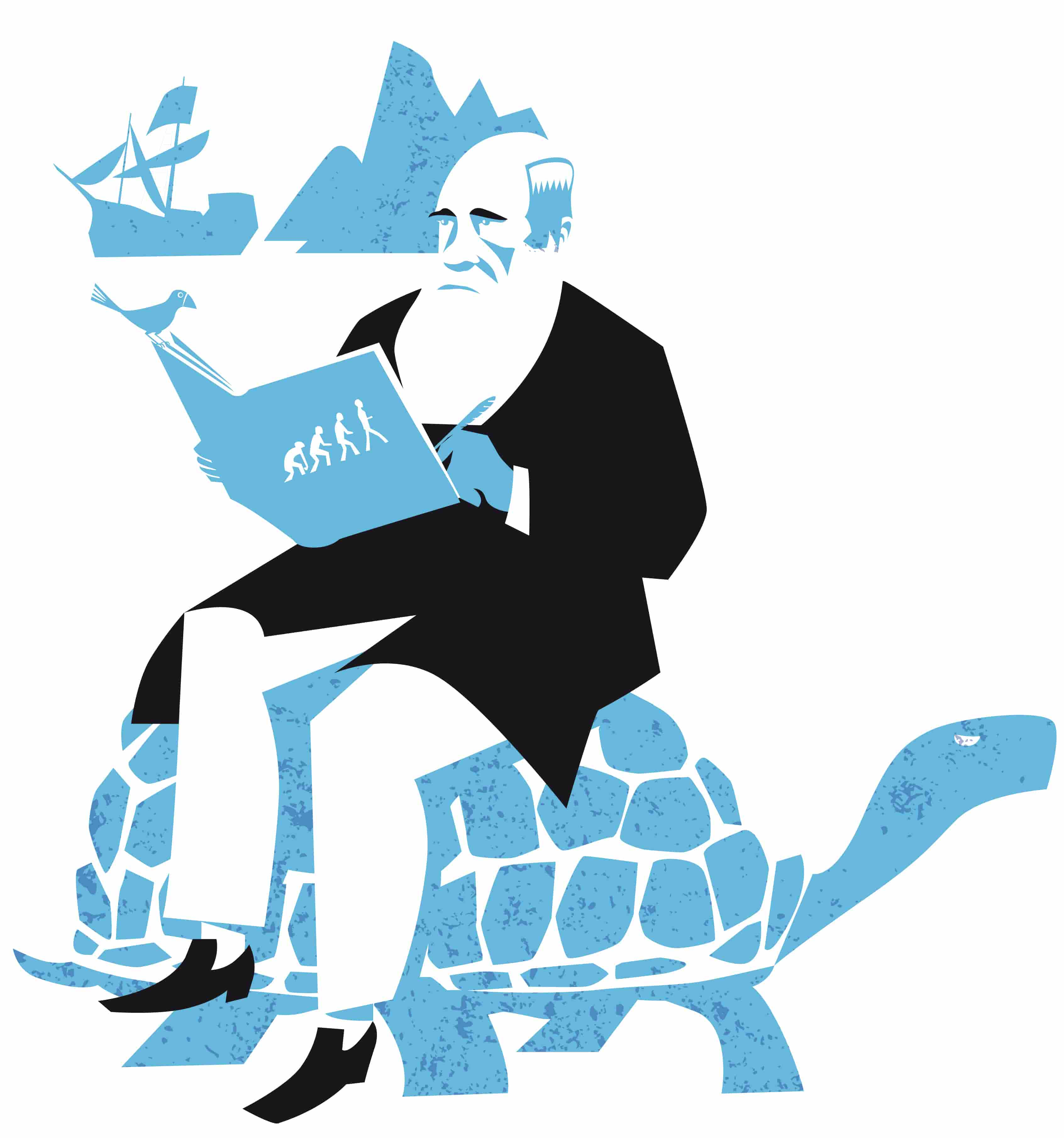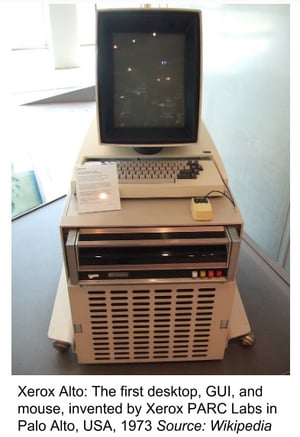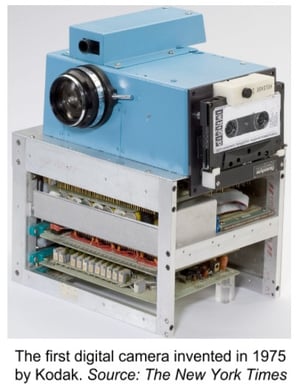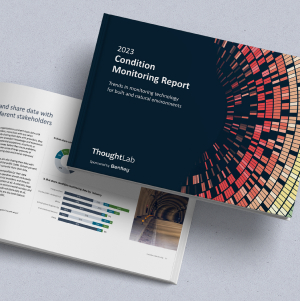
-
Meteorology
Environmental Internet of Things
Featured
Hydrometry
Environmental Manager/Owner
Blog
All
Metocean
Air & Noise
- 07 February 2024
- | Blog
Adapt or die - Adoption of Environmental IoT by environmental consultancies
Company size and reputation provide a strategic business edge, and yet, the business world graveyard is crammed with large, respected, oft-beloved companies that failed to innovate. In fact, 88% of the Fortune 500 companies that qualified in 1955 do not anymore or ceased to exist.
Long-term survival is, objectively speaking, no longer a likely long-term scenario. Even less so if you refuse technological adoption. Innovation is vital, but often challenging, requiring not necessarily the ability to invent, as much as to envision. To see the potential, improve it, and fit it to market.
Here, we cover why environmental consultancies must build internal skills in remote environmental monitoring and leverage the Environmental Internet of Things (EIoT) to remain competitive.
We will explore the typical sources of innovation and hurdles to EIoT adoption, borrowing from real-life IT examples, and present solutions.
Early-mover innovation: Great if built around customer value
 Who would not want to be in on the next big thing? Being an early adopter has obvious benefits, but only if you can see how it translates into customer value!
Who would not want to be in on the next big thing? Being an early adopter has obvious benefits, but only if you can see how it translates into customer value!
Kodak invented the first digital camera in 1975 but did not see value in digital and shelved it. They entered an odd blinking contest with their market, one clamoring ever louder with pent-up demand for digital. Kodak was sure their “beautiful” branding would crush the tacky new tech. They narrowed their proposition to “beautiful picture taking”, ignoring the massive customer expectations enabled by digital (convenience, versatility, story-telling, cost). They closed in 2012.
Steve Jobs, on the other hand, did not invent Windows. But when he witnessed the first PC UI and mouse, in that fateful Xerox PARC lab room he leapt about the room in excitement, shouting, “Why aren’t you doing anything with this? This is the greatest thing! This is revolutionary!” Xerox execs did not see value in a desktop PC UI and mouse. They virtually gave it away to Jobs, who became a billionaire.
Xerox Alto: The first desktop, GUI, and mouse invented by Xerox PARC Labs in Palo Alto, U.S., 1973. Source: Wikipedia.
What this means for EIoT
Never frame tech as just tech, never forget customer value. IoT remote monitoring and cloud-based environmental data systems are full of deep, obvious customer value.
You can impress clients with reduced monitoring requirements and the need for the preparation of manual reports to communicate monitoring data.
Remote monitoring can also give you a cost advantage when tendering, the payback period on hardware can often occur in months for a remote monitoring project.
Most importantly, remote monitoring can provide real-time insight into environmental conditions, unachievable with traditional manual in situ or sample-based monitoring.
Environmental IoT sensors cannot yet measure everything. But what they can, they measure at a fraction of the cost, orders of magnitude better (24/7 alarming, high-end data visualization and data mining, etc.) EIoT platform software offers intuitive access to actual insights.
They are versatile when it comes to setting up discrete sensor networks, stakeholders’ access and privileges, scaled pricing, etc. All of these customer benefits make it a dream come true for environmental consulting companies IoT is still in its early days, largely an improvement on internet protocols, and is still in a continued innovation stage. It is certainly not too late to be an early adopter.
Capturing low entry barrier EIoT innovation: Fit-to-new-market
Some innovation is made harder to adopt because of high entry barriers. Typically: High initial financing, constraining legislation, high operational and cultural barriers, high critical mass required, steep learning curve, difficulty securing expert staff, etc.
Two things worth noting:
As far as IoT innovation adoption barriers go, they are pretty low. Cloud software can be subscribed to collect, store and understand sensor data for low monthly subscriptions, and a one-hour learning curve. Sensors and modems can be purchased for less than the cost of the time required to visit the site once.
The largest barrier is knowing where to start. What sensor/logger/gateway/ cloud platform to use? This is tougher than it seems, many players in the field will guide new entrants through this process. A clever way to manage this procurement journey is to ask a cloud software provider about sensors, gateways, and modems — and ask hardware manufacturers about cloud software!
The business model of a company and its fit for the new market is essential and can artificially raise entry barriers to a blue-sky market. Harvard business professor Clayton Christensen uses DEC to illustrate.
They adopted the same, new, microprocessor tech as IBM but CEO Ken Olsen did not believe in PCs which he assumed were going to fall flat, as expensive “toys”. So they packaged their offer in much larger systems, around $50,000. IBM, with the same processors, captured the emerging PC market at a $2,000 price point. DEC folded. IBM conquered the world.
The innovation is not usually the difficulty, it is weaving it coherently into an offering to liberate customer value.
What this means for EIoT
Intuitive interfaces, scalable cost-effective pricing, short learning curves, and high versatility. EIoT represents obvious customer benefits, across all the big indicators — CapEx/Operational cost savings, quality, ease, and operational efficiency.
Monitoring hardware is becoming simpler to set up which makes it easier than ever to add this service to what consultancies offer.
The fit to this new market is a simple one: More, better, more cost-effective. Environmental consultancies that will most benefit will be those who package their EIoT offer to pass on the maximum benefits to their customers.
Forced adoption
 If inventing a technology does not guarantee success, leaving adoption too late more or less guarantees failure to catch up.
If inventing a technology does not guarantee success, leaving adoption too late more or less guarantees failure to catch up.
Kodak, once the behemoth, took 21 years to bring their digital camera invention to market, in 1996, and it killed them. They tried in vain to finally latch on to the digital bandwagon, but way too late. By then the marketplace was crowded with competitors who, if they had taken a later start, had since evolved their digital offer way beyond Kodak. They filed for bankruptcy in 2012.
The first digital camera was invented in 1975 by Kodak. Source: The New York Times.
Xerox, to whom we owe the core desktop PC architecture and UI, the mouse, and the “windows” system gave it away to Jobs. Their management could not “see the value”. Xerox flirted with bankruptcy across the 00’s, losing huge size, staff, BU’s and over 90% of their market cap. In the end, they did not even try to catch up with the tech they had invented. They finally turned around as a services company, a fraction of their former size, gradually disappearing into Fujifilm.
What this means for EIoT
Forced adoption is a common source of late “innovation” but almost invariably a painful one. It implies playing catch-up with competitors who have already trained themselves, refined their fit-to-market, and ironed out operational kinks.
There is another source of forced adoption and it is regulatory in nature. When lawmakers raise the bar across any legal, safety, or performance-related metric, adoption accelerates.
Regulators are undertaking pilot projects to assess the value of continuous monitoring of environmental discharges on high-risk sites.
One of our governmental clients is trailing EIoT technology for a variety of purposes:
- To allow for public exposure of monitoring data to encourage good corporate behavior of licensees.
- To allocate inspection and audit staff to sites most at risk.
- To allow for near real-time detection of non-compliance
- To allow intervention and pollution avoidance (rather than prosecution after the fact).
- To the collection of high-quality data in a timely fashion, that could be relied upon for supporting a prosecution.
It is likely that in time, continuous monitoring will start to appear as regular approval conditions. Companies without these skills are not going to be able to service clients.
Conclusion
Innovation and technological change are becoming the new constant. New technologies like IoT are bringing colossal value to end-users. Other technological innovations in related fields, such as nano-satellites bringing “IoT everywhere”, are further leveling the technological landscape.
Regulators are often open to substituting infrequent expensive manual sampling of a wide range of parameters, with continuous monitoring of a subset of parameters (with manual monitoring kicking in by exception). Using continuous monitoring to achieve a win like this for your clients is an easy win.
For integrators and environmental consultancies, adoption is likely going to be massive if only for the enormous benefits that EIoT represents for their end users.
With low entry barriers, this technology will be easily integrated. Also, it will mean that end-users who see better elsewhere will easily change suppliers. The fit-to-new market here will be a simple one. Easy integration, passing on maximum environmental monitoring value to end-users.
Delaying the adoption of EIoT technologies may sound the death knell for many environmental integrators and consultancies. Do not be the Kodak of the EIoT world. As Steve Jobs showed, you do not need to invent, but you need to adopt a smart technology, with an easy and smart fit to market.
Contact us to learn about our EIoT platform for asset owners, consultants and scientists.
- Author: Stephane Malhomme
- Read time: 3 mins
- Region/Location: Australia, Queensland
- Vertical: Coal Seam Gas
- Sectors: Oil & Gas
- Hardware: Campbell Scientific

2023 Insights into Environmental Monitoring
Download nowDetails
- Author: Stephane Malhomme
- Read time: 3 mins
- Region/Location: Australia, Queensland
- Vertical: Coal Seam Gas
- Sectors: Oil & Gas
- Hardware: Campbell Scientific



